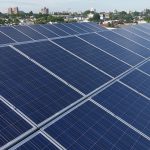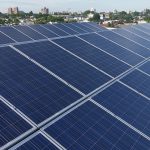
Groundbreaking research developed by scientists at the University of York in the U.K. has improved the ability of solar panels to absorb light by a remarkable 125%. The innovative research involves designing solar panels in checkerboard lines is seen as a potential game-changer, having the prospect of harvesting ten times more energy for the same relative cost.
The researcher team stated that the landmark research could pilot the production of thinner, lighter, and more flexible solar panels. The team examined different surface designs that impacted the absorption of sunlight in solar cells, and which when put together form solar panels. Moreover, the researchers achieved the feat by utilizing a checkerboard design for their panel face, instead of the traditional flat panel surface. The novel design enhanced the diffraction rate, which measures the probability of light being absorbed.
The study was led by a research team from the University of York and conducted in partnership with NOVA University of Lisbon. Dr. Christian Schuster from the Department of Physics highlighted how they found a straightforward method for increasing the absorption of slim solar cells. He cited how their investigations showed that their idea rivals the absorption enhancement of more sophisticated designs. The design could absorb less light near the surface structure itself, and more light deep in the plane. He added that the design rule met pertinent aspects of light trapping for solar cells, opening the way for exceptional diffractive structures, with a potential impact beyond photonic applications.
Dr. Schuster added that the design extended the potential to integrate solar cells into thinner materials and create more opportunities to use solar power in more products. The study suggests the design principle could impact the solar cell or LED sector and applications such as windbreak panels, biosensing applications, acoustic noise shields, anti-skid surfaces, and atomic cooling.
Dr. Schuster added that they planned to deploy ten times more solar power with the same amount of absorber material, so slimmer solar cells could increase solar electricity production while lessening their carbon footprint.
Did you miss our previous article…
https://www.solardogz.com/?p=219




